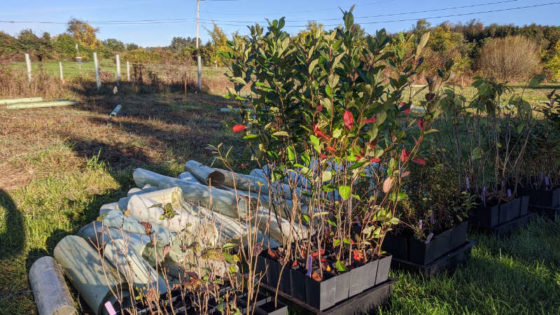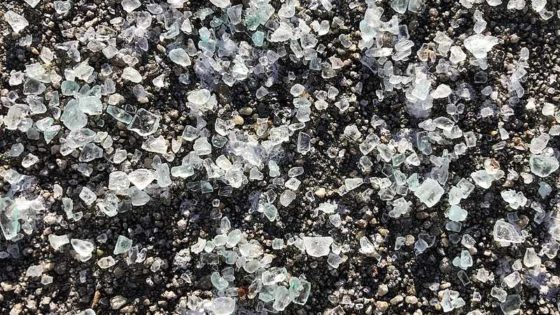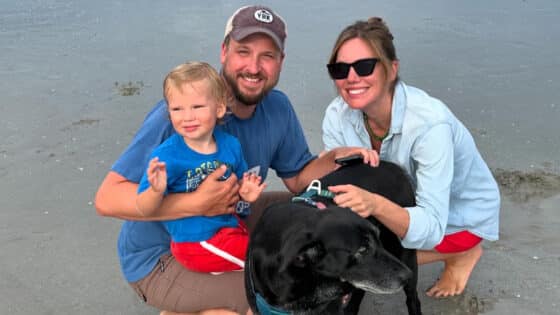 As forests marked autumn’s brilliant arrival to the Mid-Atlantic, the Stroud Center’s Watershed Restoration staff and Director Bern Sweeney covered thousands of miles to bring our vision of healthy streams to audiences from New York to Maryland and across Pennsylvania. Here, in brief, is our approach to outreach to distant watersheds and new communities.
As forests marked autumn’s brilliant arrival to the Mid-Atlantic, the Stroud Center’s Watershed Restoration staff and Director Bern Sweeney covered thousands of miles to bring our vision of healthy streams to audiences from New York to Maryland and across Pennsylvania. Here, in brief, is our approach to outreach to distant watersheds and new communities.
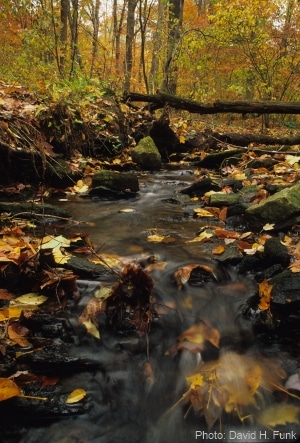 The future of fresh water depends on how we live on the land, build our homes, conduct commerce and produce our food. Business as usual will neither correct the mistakes of the past nor solve current problems. An informed public is critical.
The future of fresh water depends on how we live on the land, build our homes, conduct commerce and produce our food. Business as usual will neither correct the mistakes of the past nor solve current problems. An informed public is critical.
Fortunately, many solutions are straightforward and cost-effective. For example, our Long Term Research in Environmental Biology project, a groundbreaking study of White Clay Creek, helps confirm that restoring forests along stream corridors is a necessary “best practice.” These riparian forests enhance the stream’s plant and animal communities and its physical properties.
Restored stream ecosystems process both natural substances and unwanted pollutants more effectively than degraded waterways. Healthy streams and their inhabitants break down, assimilate, and eliminate many water contaminants around the clock, seven days a week.
A comprehensive review of scientific literature pertaining to forested stream buffers, recently published by Director Bern Sweeney, Ph.D., and Research Scientist Emeritus, Denis Newbold, Ph.D., found that streams typically need buffers at least 100 feet wide on each side to protect and restore the stream ecosystem and its services. The study helps address a long-standing debate regarding buffer width and gives land managers new insights for protecting their own land and water.
Using Nature as a Model
Matt Ehrhart, Watershed Restoration Director at the Stroud Center, feels that many communities are ready for watershed protection techniques that use nature as the model.
“Natural resources are resilient, with tremendous capacity for regeneration and renewal,” Ehrhart said. “But we need to create the conditions in which natural processes can flourish. Technology alone is not enough.”
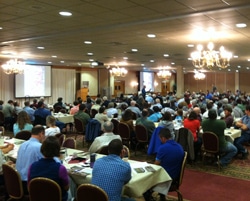
Stroud and USDA-NRCS shared soil and stream science with 225 farmers in New Holland, Pa. Photo: Lamonte Garber
Based on this model, the Stroud Center’s Watershed Restoration Program helps landowners reduce pollution from the land and at the same time restore the streams’ ability to process pollution. Planting and caring for new streamside forests is combined and integrated with other improvements with an overall objective of whole farm conservation.
Reaching Distant Watersheds and New Communities
We rely on many partners to deliver this “higher bar” program, and we share our science and strategies with natural resource managers, farmers, local governments … anyone with a stake in clean water. This fall, for example:
- We addressed soil and water district staff from across New York.
- We collaborated with Maryland partners to host a gathering of Chesapeake Bay conservationists.
- We partnered with USDA-Natural Resources Conservation Service (USDA-NRCS) to share soil and stream science with farmers in New Holland Pa.
- We traveled to western Pennsylvania to share strategies with colleagues working to protect the Ohio River watershed.
- We spoke to groups in Wilkes-Barre, Willow Street, and State College, Pa. and Big Flats, New York.
- We partnered with Pennsylvania Department of Conservation and Natural Resources and Chesapeake Bay Foundation to share our latest restoration science with conservation professionals.
Learning as Shared Discovery
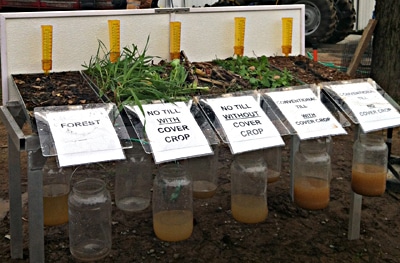
A USDA-NRCS demonstration of how healthy soils reduce rainfall runoff, on a field day hosted by Cover Crop Solutions, LLC. Photo: Lamonte Garber
The Stroud Center’s approach to outreach takes to heart these words from Ben Franklin: “Tell me and I forget. Teach me and I remember. Involve me and I learn.”
Learning works best as shared discovery, and we gain many insights from these exchanges with our colleagues and the public.
For example, we’ve learned that preventing soil erosion is just the beginning of good farming practice. Building soil health is the future. Healthy soils have excellent tilth, organic matter, and healthy microbes. Rain infiltrates in these soils and runoff declines.
Innovative farmers understand such connections intrinsically. They approach their fields and pastures as ecosystems, not simple growing media. When asked to summarize what he took away from a recent soil-stream workshop, one farmer simply said,
“Worms-Bugs-Trees-Fish.”
That’s natural capital.

